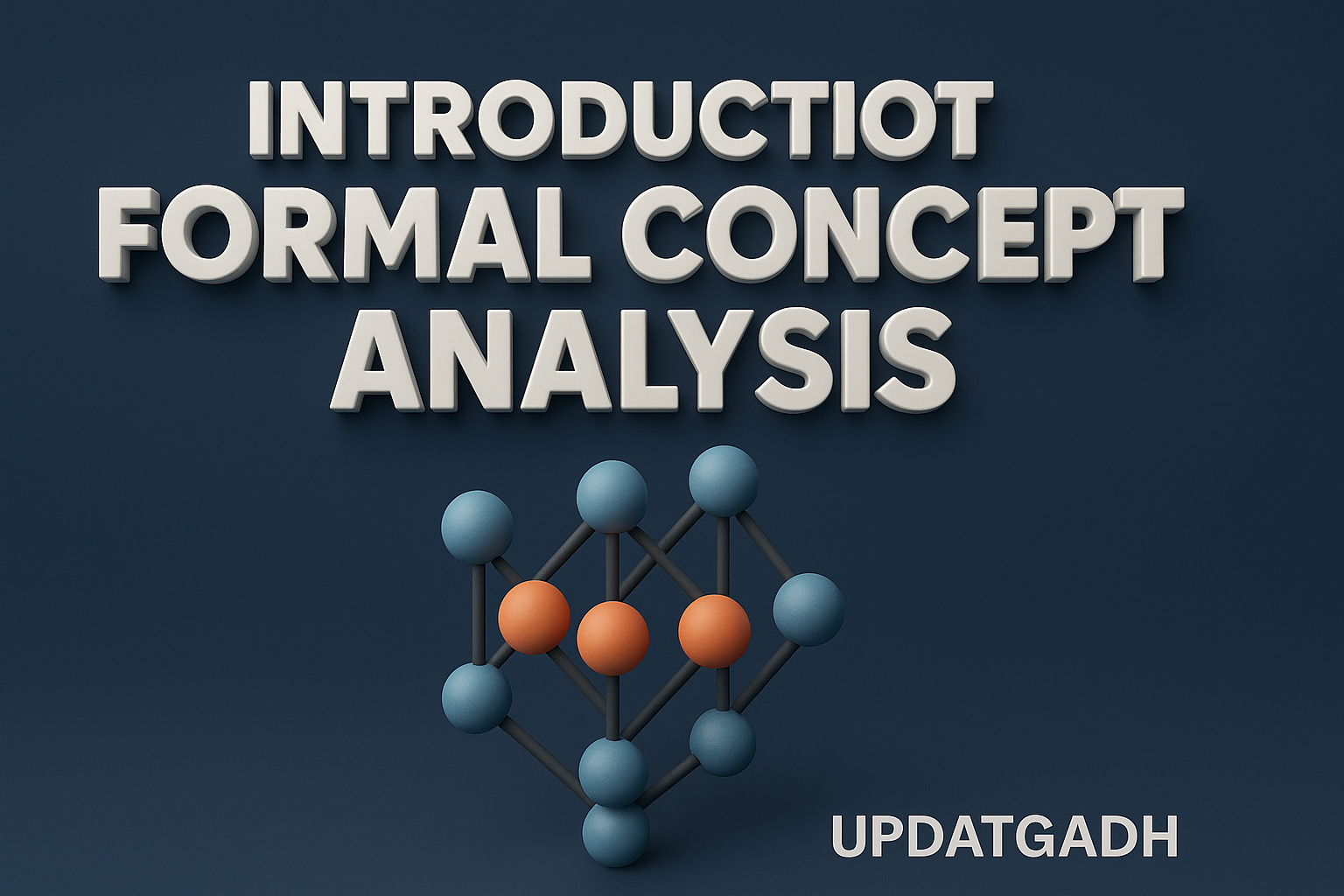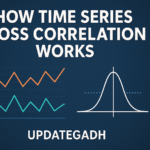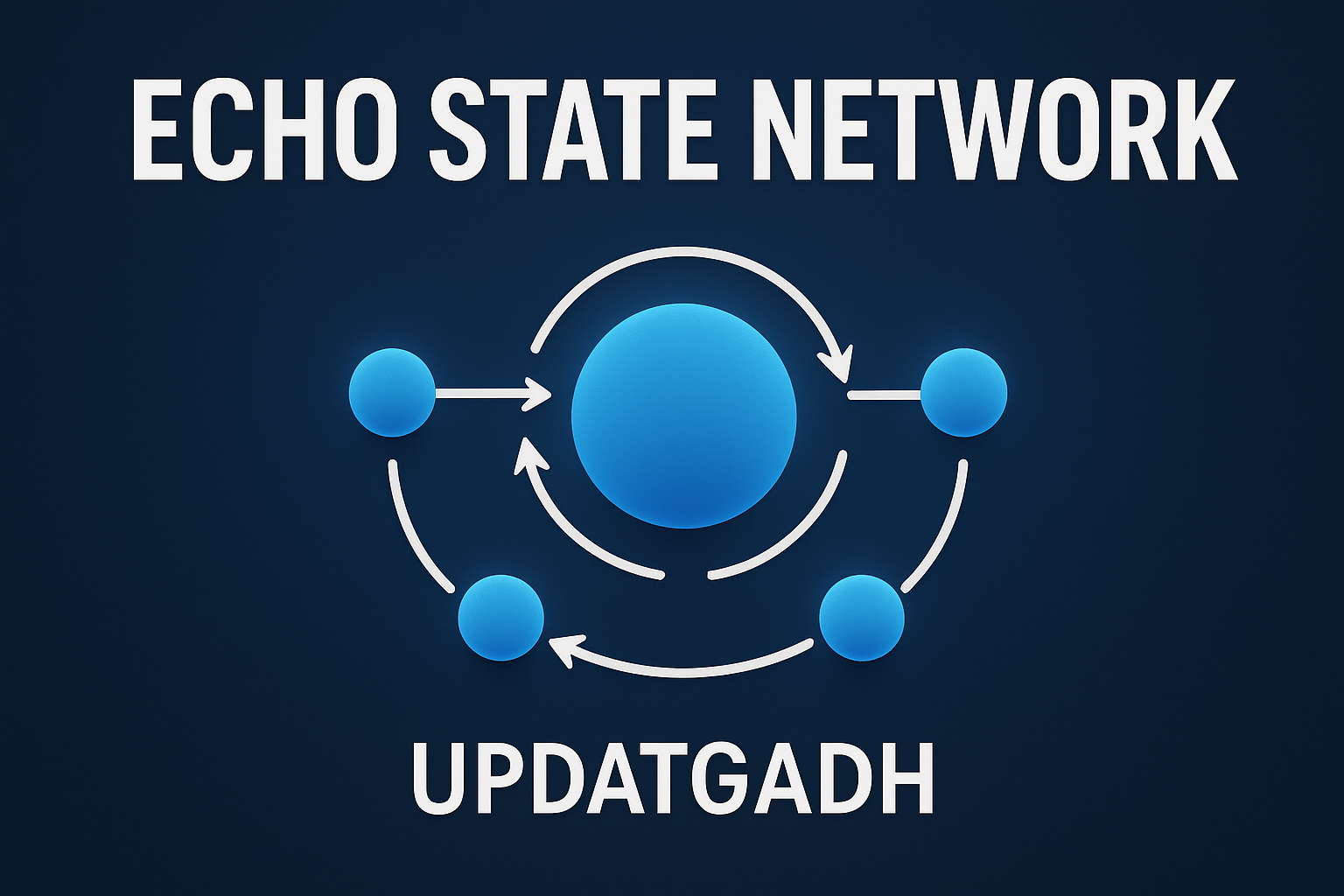

Introduction to Formal Concept Analysis
Introduction to Formal Concept Analysi
Formal Concept Analysis (FCA) is a powerful mathematical approach developed by Rudolf Wille in the 1980s. It’s primarily used to analyze and structure complex data by uncovering relationships between objects and their attributes. FCA plays a crucial role in knowledge representation, data mining, and software engineering by providing a clear and structured way to identify patterns and hierarchies within datasets.
In this article from Updategadh, we explore the core principles, structure, and practical applications of FCA, making it accessible even for those new to the topic.
Machine Learning Tutorial:-Click Here
Data Science Tutorial:-Click Here
Complete Advance AI topics:-CLICK HERE
DBMS Tutorial:-CLICK HERE
What Is Formal Concept Analysis (FCA)?
At its core, FCA is a method used to group data based on shared attributes and to represent this grouping in the form of a concept lattice. It reveals logical connections and helps users discover patterns that are not immediately visible.
FCA is especially useful in scenarios where understanding the relationships between data points is more valuable than just statistical summaries.
Key Components of FCA
1. Formal Context
The foundation of FCA is the formal context, which is represented as a triple (G, M, I) where:
- G – A set of objects (e.g., animals like lions, tigers, and bears).
- M – A set of attributes (e.g., “has fur”, “can fly”, “is carnivorous”).
- I – A binary relation between G and M, defining which object has which attribute.
This relation can be visualized using a matrix, where rows are objects, columns are attributes, and each cell indicates whether a specific object has a specific attribute.
2. Formal Concept
A formal concept is a pair (A, B) where:
- A (Extent): The set of objects sharing all attributes in B.
- B (Intent): The set of attributes shared by all objects in A.
For example, if A includes lions and tigers, and both have “has fur” and “is carnivorous” in common, then B will contain those shared attributes.
The concept ensures that:
- Every object in A has all attributes in B.
- Every attribute in B applies to all objects in A.
3. Galois Connection
The Galois connection forms the mathematical bridge between objects and attributes:
- Given a set of attributes, it identifies all objects that share them.
- Given a set of objects, it identifies the shared attributes.
This connection ensures consistent derivation of formal concepts and maintains the symmetry between objects and their properties.
The Concept Lattice
A concept lattice is the graphical and structural representation of all formal concepts derived from a formal context. It provides a hierarchy that captures how concepts generalize or specialize relative to each other.
Understanding Its Structure
- Nodes represent formal concepts (A, B).
- Edges indicate a generalization-specialization relationship.
- Top Node: The most general concept (all objects, no shared attribute).
- Bottom Node: The most specific concept (no objects, all possible attributes).
- Intermediate Nodes: Represent partial groupings based on shared subsets of attributes.
Properties
- Uniqueness: Each concept appears exactly once.
- Completeness: The lattice includes all possible formal concepts.
- Order Preservation: Maintains the logical order of general to specific.
Example
In a context where objects are animals and attributes include “can fly” or “has fur”, one node may represent flying animals (e.g., bats, birds) with the attribute “can fly”. Another may represent animals with fur (e.g., lions, bears), and so on.
Applications of FCA
Formal Concept Analysis has diverse applications across disciplines:
1. Data Mining
FCA is used to find clusters, associations, and patterns in large datasets. It’s valuable in tasks like classification and rule mining, where relationships are not always explicitly defined.
2. Knowledge Representation and Ontology Building
FCA is instrumental in creating structured knowledge bases and ontologies in fields such as artificial intelligence. It helps define concepts and how they interrelate hierarchically.
3. Information Retrieval and Text Mining
By organizing data conceptually rather than just syntactically, FCA improves search algorithms. It enables retrieval based on meaning and relevance rather than just keyword matches.
4. Software Engineering
FCA assists in understanding and refactoring codebases. It helps identify common patterns, group related functionalities, and supports software reengineering and comprehension.
Strengths of FCA
- Clarity & Structure: Offers a systematic way to interpret complex relationships in data.
- Versatility: Applicable across domains—from biology to IT.
- Conceptual Insight: Helps discover implicit and explicit patterns.
- Visualization: The concept lattice provides intuitive visual representation.
- Data-Driven: Works directly on raw data without needing predefined classes.
- Mathematical Rigor: Ensures accuracy and consistency in analysis.
Limitations of FCA
While FCA is robust, it comes with certain challenges:
- Scalability: Building lattices for large datasets can be resource-intensive.
- Binary Data Constraint: It primarily handles binary relations, requiring preprocessing for continuous data.
- Complexity: Large lattices can become difficult to interpret.
- Interpretation Barrier: Requires understanding of mathematical structures.
- Limited Abstraction: Best suited for explicit data; hidden or abstract patterns may go undetected.
- Data Quality Dependence: FCA’s results are only as reliable as the quality of input data.
Complete Python Course with Advance topics:-Click Here
SQL Tutorial :–Click Here
Download New Real Time Projects :–Click here
Final Thoughts
Formal Concept Analysis provides a rich, structured approach to understanding data relationships. Whether you’re exploring patterns, organizing information, or analyzing software systems, FCA offers a clear and logical pathway to insights. While it has limitations, especially with scalability and binary data constraints, its strengths make it a valuable tool in the data analyst’s toolkit.
For professionals in fields like AI, data science, or software engineering, learning FCA can open new ways to interpret and structure complex datasets.
Stay tuned with Updategadh for more in-depth guides on mathematical tools and data-driven technologies.
introduction to formal concept analysis ppt
introduction to formal concept analysis pdf
formal concept analysis python
what is a formal concept in psychology
example of formal concept in psychology
formal concept analysis in artificial intelligence
concept analysis example
formal concept vs natural concept










Post Comment